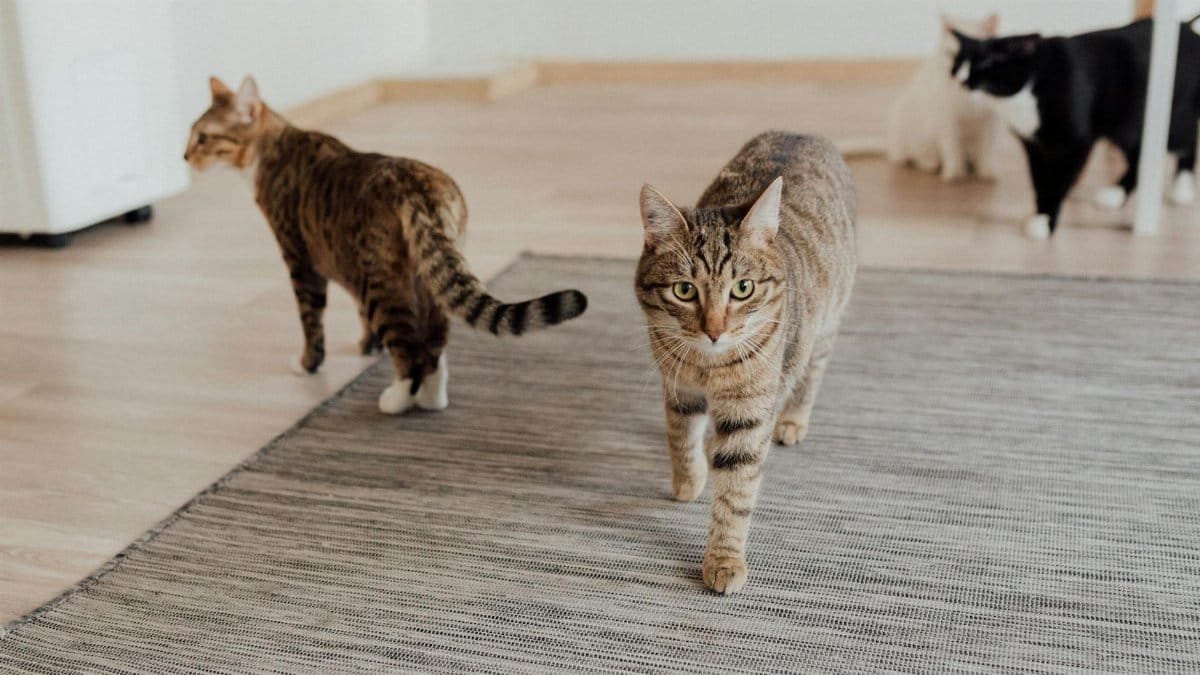Think of introducing a new cat to your home as orchestrating a delicate dance. One wrong step, and the rhythm falters. Cats, with their territorial instincts and unique personalities, often resist change, turning what should be a joyful addition into a clash of hisses and swipes. Yet, across the U.S., more households are embracing multi-cat living—over 74 million cats are owned as pets, according to the American Pet Products Association. The challenge lies in making that first meeting, and the days that follow, a foundation for harmony. How do you ensure your resident feline and the newcomer don’t just coexist, but thrive? It starts with patience and a plan. Here are eight practical tips to guide you through the process of introducing a new cat, helping to transform potential chaos into a peaceful, purring household.
1. Prepare a Safe Space Before the Arrival

Long before the new cat crosses your threshold, set the stage. Designate a quiet room—think a spare bedroom or even a large bathroom—where the newcomer can decompress without interference. Stock it with essentials: a litter box, food and water bowls, a cozy bed, and a few toys for comfort. The goal is sanctuary. A study from the Cornell Feline Health Center emphasizes that reducing initial stress is critical for long-term feline relationships. Keep the door closed to shield the new cat from curious or hostile eyes. This isn’t just about physical space; it’s about giving them a mental buffer to adjust to unfamiliar smells and sounds. Let them explore this haven at their own pace before any introductions begin.
2. Gather Supplies for a Smooth Transition

Imagine the chaos of realizing, mid-introduction, that you’re missing a key item. Avoid this by doubling up on supplies ahead of time. Each cat needs their own litter box—experts at the Humane Society recommend one box per cat, plus an extra, to prevent territorial disputes. Separate food and water stations are non-negotiable too; shared bowls can spark tension. Consider pheromone diffusers like Feliway, which mimic calming feline scents and have been shown to ease anxiety in multi-cat homes, per research summarized by the National Institutes of Health. Having these resources ready isn’t just practical—it signals to both cats that there’s no need to compete. Abundance lays the groundwork for peace.
3. Start with Scent Swapping

Cats live in a world of smells. Before they meet face-to-face, let them get acquainted through scent. Rub a soft cloth on the new cat’s cheeks to capture their pheromones, then place it near the resident cat’s favorite spot. Do the same in reverse. This indirect introduction can lessen the shock of a full encounter. A friend once shared how her two cats, initially hostile, began to relax after a week of scent swapping—by the time they met, curiosity had replaced suspicion. It’s a slow build, but it works. Watch for reactions: a hiss at the scented cloth means more time is needed. Patience here prevents a rocky start. Let their noses do the talking first.
4. Allow Visual Contact Through Barriers

Once scents are familiar, it’s time for a peek without contact. Set up a baby gate or crack the door of the new cat’s room just enough for them to see each other. Keep these sessions short—five minutes at first—and always supervised. The barrier ensures safety while letting them gauge body language. Are tails up or flattened? Eyes wide or narrowed? These cues tell you if they’re ready for more. One pet owner recalled watching her resident cat puff up at the sight of the newcomer, a sign to slow down. Rushing this step risks fights. Gradually increase exposure over days, or even weeks, until curiosity outweighs wariness. It’s a test of your restraint as much as theirs.
5. Supervise the First Face-to-Face Meeting

The moment of truth arrives when barriers come down. Choose a neutral space—avoid areas where the resident cat feels proprietary, like their favorite perch. Keep a towel or blanket handy to separate them if tensions flare. Don’t force interaction; let them approach on their terms. A low growl or hiss is normal, but swatting or chasing means it’s time to step in. Stay calm—cats pick up on your energy. If all goes well, a tentative sniff might be the first olive branch. End the session before fatigue or frustration sets in, even if it’s just a few minutes. This isn’t a race. Each positive encounter builds trust, brick by brick.
6. Monitor Eating and Litter Box Habits

Stress often shows up in subtle ways. After introducing a new cat, keep a close eye on both felines’ eating and bathroom behaviors. A sudden refusal to eat or inappropriate elimination can signal anxiety or territorial issues. Place litter boxes in separate, accessible spots to avoid conflict—one cat blocking access can escalate tensions fast. Similarly, feed them apart initially, watching for signs of food guarding. If problems persist, a vet visit might uncover underlying stress or health concerns. Small adjustments, like moving a box or feeding at different times, can make a big difference. Their daily routines are a window into how well the introduction is truly going.
7. Encourage Play to Build Bonds

Play is a universal language for cats, and it can bridge the gap between strangers. Once they’re tolerating each other’s presence, introduce shared activities with interactive toys—think feather wands or laser pointers. Keep your role active; don’t just toss a toy and walk away. Guide the play to ensure neither cat feels left out or threatened. One online account described how a shy new cat opened up during a joint play session, darting after a toy alongside the resident cat, their first real connection. Reward calm behavior with treats, reinforcing that good things happen when they’re together. Over time, these moments can turn wary roommates into companions. Fun has a way of melting barriers.
8. Be Patient and Adjust as Needed

Every cat duo is different. Some bond in days; others take months. Resist the urge to rush—cats set their own timeline. If hissing or hiding persists beyond a few weeks, reassess. Maybe the new cat needs more alone time, or the resident cat feels overwhelmed. Backtrack to earlier steps if necessary, like scent swapping or barrier visuals. Remember that setbacks aren’t failures; they’re just detours. A steady, gentle approach often wins out. After all, you’re not just merging two cats—you’re weaving together two distinct worlds. Give them, and yourself, the grace to adapt. Harmony rarely comes overnight, but when it does, the quiet purrs of a united household are worth every careful step.
